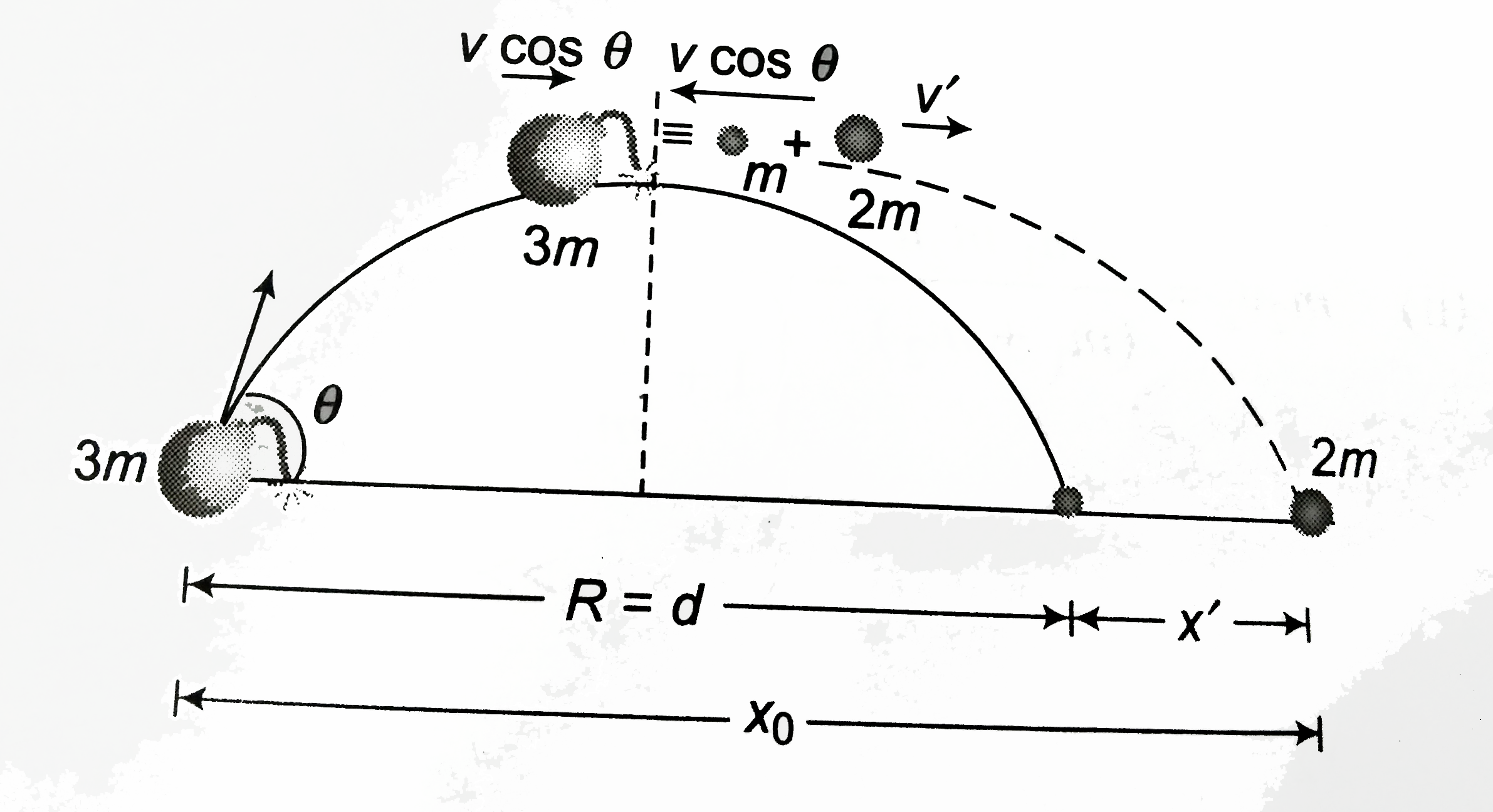A cannon shell is fired to hit a target at a horizontal distance . However , it breaks into two parts of mass ratio at its height point. The smaller part returns to cannon. The other part
(i) will fall at a distance beyond the target
(ii) have eight times the kinetic energy of smaller part
(iii) the increase in kinetic energy of system after explosion is
(iv) after explosion , heavier part will take more time as compared to smaller part , to strike the ground
all options are correct
The correct Answer is:B
(i) is .
Momentum conservation at the highest point is
(ii) is .
before explosion
after explosion
(iii) is
Both parts will strike the ground simultaneously , (iv) is wrong.

Topper's Solved these Questions
Similar Questions
A cannon shell is fired to hit a target at a horizontal distance R. However, it breaks into two equal parts at its highest point. One part (A) returns to the cannon. The other part is:
View SolutionA cannon shell is fired to hit a target at a horizontal distance R. However, it breaks into two equal parts at its highest point. One part (A) returns to the cannon. The other part:
View Solution
Knowledge Check
A cannon shell is fired to hit a target at a horizontal distance R. However, it breaks into two equal parts at its highest point. One part (A) returns to the cannon. The other part:
AWill fall at a distance of R beyond the targetBWill fall at a distance of 3R beyond the targetCWill hit the targetDHave nine times the kinetic energy of A just after explosionA cannot shell is fired to hit a target at a horizontal distance R. However, it breaks into two equal parts at its highest point. One part (A) returns to the cannon. The other part
Awill fall at a distance of R beyond the targetBwill fall at a distance of 3R beyond the targetCwill hit the targetDhave nine times the kinetic energy of AA cannon shell 1 and 2 km away from the cannon. A second shell, fired identically, breaks into two equal parts at the highest point. One part falls vertically. How far from the cannon will the other land?
A2 kmB3 kmC4 kmD5 km
One projectile moving with velocity v in space gets burst into 2 parts of masses in the ratio of 1:2. The smaller part becomes stationary, the velocity of other part is
View SolutionA bomb of mass 4m explodes into two parts of mass ratio 1 : 3. If k be the kinetic energy of larger part then K.E. of small part
View SolutionA bomb of mass 4m explodes into two parts of mass ratio 1 : 3. If k be the kinetic energy of larger part then K.E. of small part
View SolutionIn the previous problem , if a bomb explodes into three parts of mass ratio 1:1:2 , one smaller part retraces its path, the second smaller part coming to rest, the distance from the point of projection , where the heavier part strikes the ground is
View SolutionOne projectile moving with velocity v in space, gets burst into 2 parts of masses in the ratio 1:3. The smaller part becomes stationary. What is the velocity of thhe other part?
View Solution
